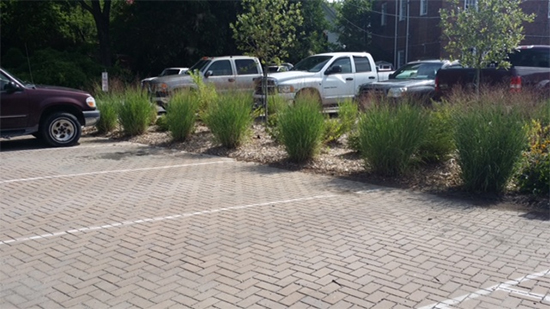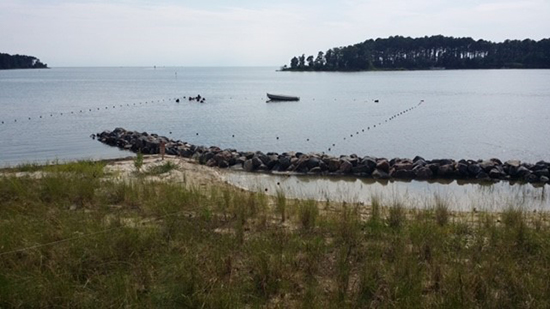The power of motivation and collaboration in rural communities
On Virginia's eastern shore, the Resource Conservation and Development Council works on a wide range of local issues

In the 1960s, in response to growing environmental degradation, the U.S. Congress called for the establishment of a nationwide network of councils that would build strong federal, state and local partnerships to expand ways for rural communities to succeed. Known as the Resource Conservation and Development Councils (RC&Ds), many were at one time sponsored by local Soil and Water Conservation Districts, county governments and planning districts. Today, most operate locally as non-profit organizations while also being tied together through the National Association of RC&D Councils.
For more than 50 years, the Eastern Shore RC&D, which serves Accomack and Northampton Counties on Virginia’s eastern shore, has specialized in facilitating research, outreach and education to all levels of the community and fostering deep collaborative partnerships with local governments, planning districts, research facilities, educational institutions, health care facilities, non-profits and citizen groups in the area. It has worked quietly in the background on wide ranging local issues, pioneering the development of innovative public infrastructure such as waterless fire hydrants for dealing with the challenges of rural firefighting; spearheading widespread implementation of public boat landings in many seaside and bayside towns; and collaborating on the development of model conservation demonstration programs such as living shorelines, which not only mitigate erosion from increased weather activity and rising sea levels, but also improve water quality which in turn improves aquaculture. (The reestablishment of oyster and clam beds in the Chesapeake Bay and the in the coastal waters of the seaside contribute not only to a major economic gain but also to the resiliency of our shorelines.) Its extensive network of sponsors and partners are critical in identifying, planning, funding and implementing projects.
At the invitation of Josephine Mooney, the Eastern Shore Council’s part-time projects director, I had the opportunity to spend a few days with them on Virginia’s Eastern Shore, attending their quarterly Roundtable, participating in a very ambitious schedule of site visits focusing on local collaborative projects, and speaking at a public meeting and reception. This region is truly unique—blessed with an abundance of resources and natural beauty, steeped in history and culture, it maintains a distinct identity. While my role as the Bay Program Director during this outing was to discuss water quality with leaders and citizens in the area, I also attended because I am constantly interested in learning about all the various Bay regions and communities and always curious about what motivates individuals to take on even more responsibilities which may not be required directly by their jobs. While the reasons varied, one thing was clearly shared: an interest in making the places where they live, work and play better for all to enjoy.
The Roundtable project partners include: VA Department of Environmental Quality (DEQ), DCR's Natural Heritage Program, Virginia Eastern Shore Land Trust, Eastern Shore District/VDH, Virginia Eastern Shorekeeper, Resource Management Associates, Citizens for a Better Eastern Shore, The Nature Conservancy, NRCS, Soil and Water Conservation District, Cooperative Extension, VA Tech AREC, VA Institute of Marine Science (VIMS), Accomack Northampton Planning District Commission (AN-PDC), Chesapeake Bay Foundation, Chincoteague Bay Field Station, AmeriCorps/Vista Volunteer Program. Thanks to the efforts of Edwin Long, the current Council Chair, the Roundtable now enjoys a broadened membership with representation from a wide variety of federal and state agencies and non-governmental organizations with whom the Council collaborates. The Virginia Secretary of Natural Resources, Molly Ward, joined the meeting, commending the ES RC&D for its work and collaboration with this very broad network of partners.

After the Roundtable discussion, we toured the Virginia Institute of Marine Sciences (VIMS) Salt Water Laboratory in Wachapreague. Its new director, Dr. Richard Snyder, showed us around while explaining some of their ongoing research and his plans for the facility’s future—all with obvious enthusiasm. VIMS then hosted a small reception where the partners and collaborators had an opportunity to informally discuss their work and plans and to meet others who are working on the shore. The following day we started out early on a marathon of site visits to see some of the great projects that resulted from this collaboration. First stop was the Native Plant Demonstration Garden at Kiptopeke State Park designed and installed by the Eastern Shore Master Gardeners. Then on to Pickett’s Harbor Natural Area Preserve, one of nine such preserves on the Eastern Shore which are owned and managed by the Virginia Department of Conservation and Recreation.
Another interesting stop was Cherrystone Aqua Farms in Cheriton, which has been producing world-renowned clams and oysters for over 115 years. Our tour guide stressed how important clean water is to the success of their operations and the concerns they have about water quality which could have a devastating impact on the economy of the region. Next we visited with Bill Jardine, owner of Quail Cove Farm, which specializes in growing, selling and distributing natural and organic foods. For Bill, growing organic foods is much more than a way to make a living: it is his passion. He experiments with different types of crops and techniques, looking for the best way to grow nutritious foods while minimizing the use of agricultural chemicals. A tall man with an infectious smile, you could feel Bill’s energy rise as he surveyed his plantings and explained what was going on. He took great delight in sharing his knowledge and experiences with us and we enjoyed listening to what he had to say.
We visited a number of other sites to view the Onancock School Nature Trail and the permeable pavement in one of the town parking lots. The Mayor of Wachapreague, Fred Janci, gave us a tour of the town’s Seaside Park in which he rightfully takes great pride. The native plantings help attract pollinators and are welcoming to the town’s residents and visitors. While we were there, a monarch butterfly made an appearance as if to confirm what the Mayor had told us.

My RC&D visit ended with a public meeting at the Eastern Shore Community College. About 70 people turned out to listen to presentations on best management practices (BMPs) for business from Shorekeeper Jay Ford and on native plants from Dot Field and Virginia Witmer, representing DCR and DEQ respectively, as well as Virginia Coastal Zone Management (CZM). I talked about the Chesapeake Bay watershed restoration effort and the importance of individual actions by land owners and residents who collectively can have a big impact on controlling pollution and helping the ecosystem recover.
The Eastern Shore of Virginia is a very special place. You only have to spend a short time there to understand that. Certainly, it faces challenges from sea level rise due to climate change, controlling development so the region can benefit economically without suffering environmentally, addressing the growth of poultry houses without sacrificing quality of life or degrading water quality. The people I met, who are collaborating on projects, understand how special this rural region is and how important it is to protect it. They are motivated, and they are making a difference. It was a beautiful thing to behold.
Note: The opinions expressed above are those of the author and do not necessarily reflect U.S. EPA policy endorsement or action.

Comments
There are no comments.
Thank you!
Your comment has been received. Before it can be published, the comment will be reviewed by our team to ensure it adheres with our rules of engagement.
Back to recent stories